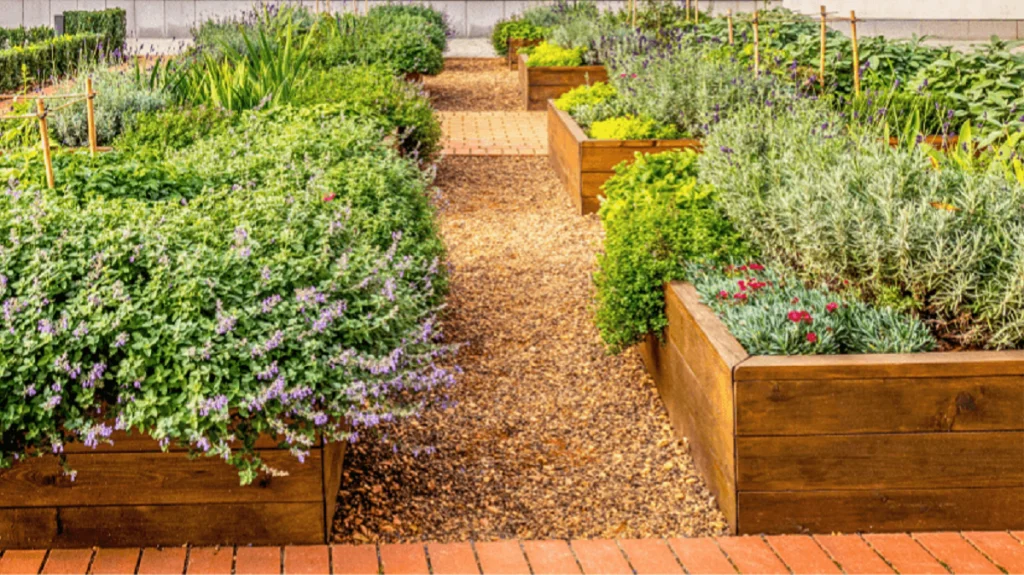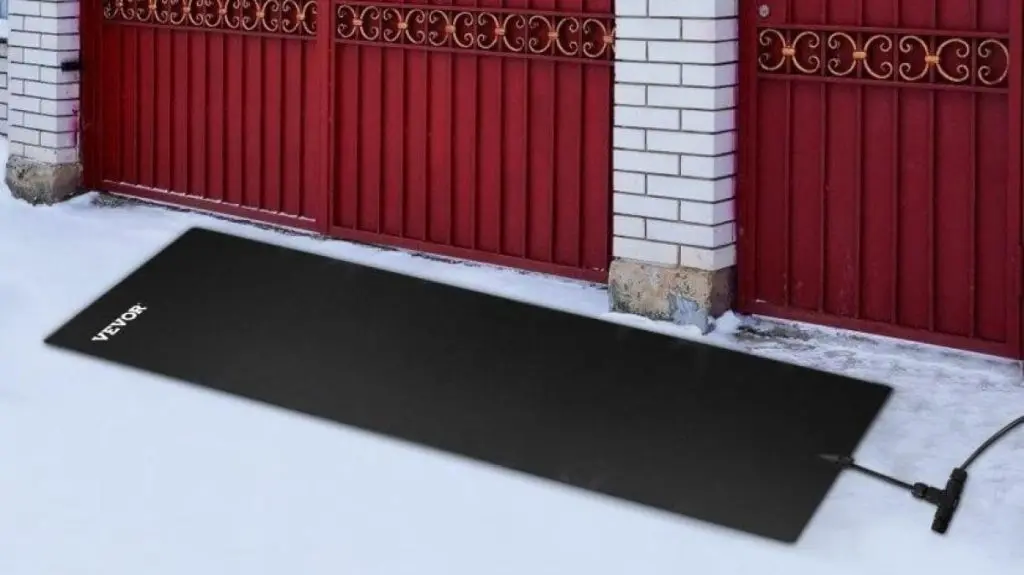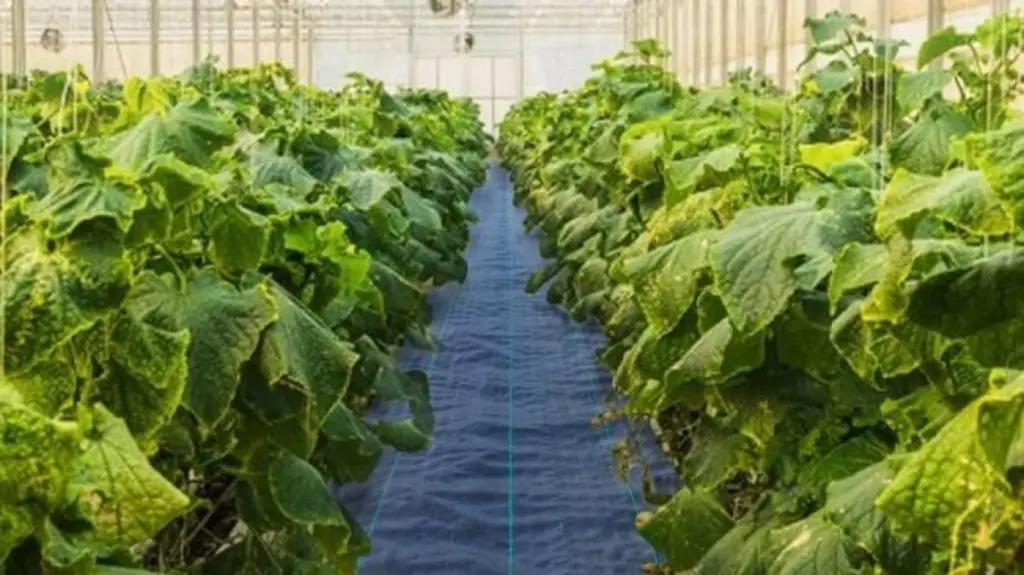A raised wooden garden bed is an effective way to improve the appearance of your garden. Wood is one of the most affordable materials, so you don’t have to be a pro and use different tools to put a simple raised wooden garden bed together. However, selecting the best woods for raised garden beds is essential to avoid chemical contamination. For raised garden installation, you should choose rot- and mildew-resistant wood. It’ll make you feel confident about the longevity of the wood for years.
If you don’t mind paying higher, opt for long-lasting wood like cedar or redwood because of its durability. These woods ensure you save money in the long run by selecting a standard construction material like pine. Let’s discover what type of wood for raised beds is best and durable.
Table of contents
- Unveiling the Ideal: What Type of Wood is Best for Raised Garden Beds
- Understanding the Benefits of Raised Wooden Garden Beds
- Delving into the Top Wood Choices for Raised Garden Beds
- Exploring Other Viable Wood Options
- Choosing the Right Wood for Your Needs: A Decision-Making Guide
- Unveiling the VEVOR Raised Garden Bed: A Sustainable Solution
Unveiling the Ideal: What Type of Wood is Best for Raised Garden Beds
Due to the numerous benefits of raised wooden garden beds, their popularity has increased. They offer better waterlogging, drainage, and soil compaction, which can inhibit the growth of plants. On the other hand, they also provide better soil quality and composition and allow plants to get enough nutrition and proper growth.
However, wood is versatile in various industries, from construction to furniture making. Choosing the best type of wood for a raised garden bed can be daunting. With this comprehensive guide, you can select the perfect wood for your garden, whether you’re an enthusiast or a professional builder.
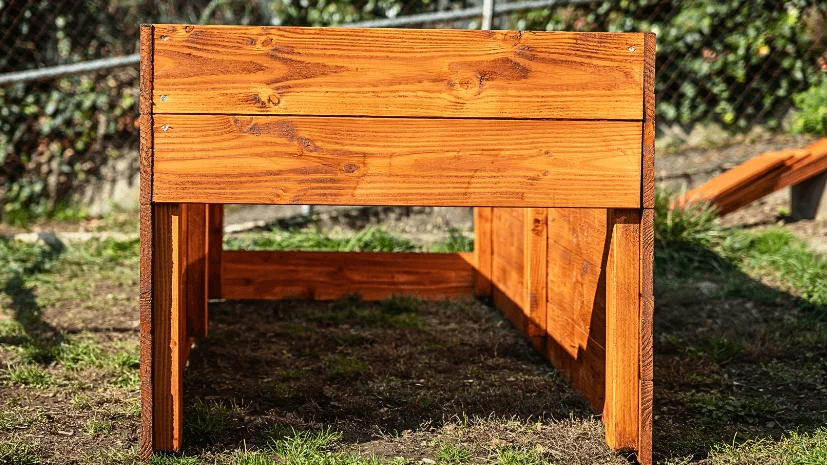
Understanding the Benefits of Raised Wooden Garden Beds
Raised wooden gardens not only improve accessibility but also offer more convenient maintenance and harvesting without bending or kneeling while performing a job. Furthermore, the best woods for raised garden beds add aesthetic appeal to your garden while offering sustainable and durable gardening solutions.
Why Choose a Raised Wooden Garden Bed
Raised wooden garden beds add rustic charm to any garden while customized, allowing gardeners to adjust the height and size to their needs and preferences.
Explore the various advantages of raised wooden garden beds:
Improved drainage and soil control: Plants get the optimal conditions for proper growth through improved drainage.
Extended growing season in cooler climates: The raised wooden garden bed warms the soil in spring and provides fall insulation, increasing the yield.
Enhanced organization and aesthetics: Installing a raised wooden garden bed to improve the aesthetic and provide a tidy and visually appealing space for your garden.
Reduced pest and weed problems: It provides a shield against the surrounding vegetation and garden soil, which reduces weeds and pest problems.
Key factors to consider when selecting the best wood type:
Durability and rot-resistance: Woods like cedar, cypress, hemlock, and redwood naturally resist decay and rot. Due to these woods’ natural oils, they provide more durability and less degradation over time.
Cost-effectiveness: Before selecting the wood, consider its long-term value as some woods may seem more costly at first, but their rot-resistance and durability make them a better choice in the long term. They need little maintenance and replacement with time.
Environmental Impact: Always look for wood certified by FSC, or you can opt for local wood as it reduces the environmental impact of transportation. Whenever finishing the wood, always consider eco-friendly options.
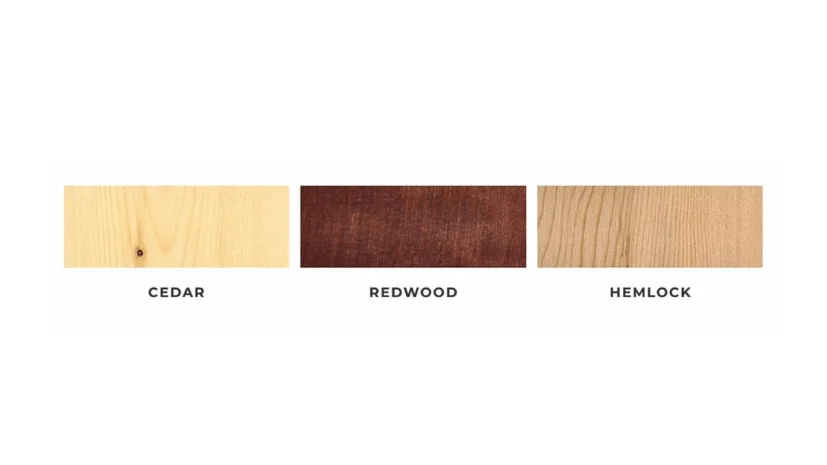
Delving into the Top Wood Choices for Raised Garden Beds
To determine what type of wood is needed for a garden bed, look at the benefits and drawbacks to determine the recommended wood for raised garden beds in your yards.
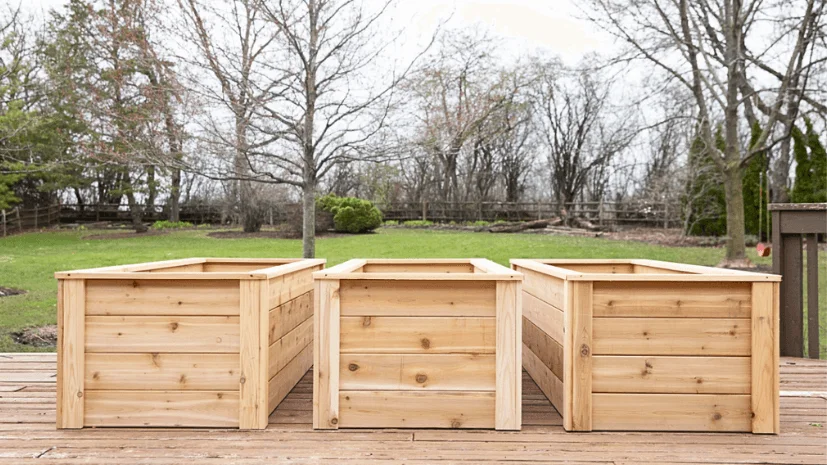
Navigating the Wood Maze: Top Contenders for Raised Beds
Cedar: The Aromatic Champion
Cedar— An aromatic champion among all the woods and the best choice for a wooden raised garden bed. Due to its exceptional rot resistance and appealing scent quality, it’s the best choice for many gardeners. It is inherently decay resistant, makes cedar an incredible option for outdoor applications, and ensures longevity and durability without needing chemical treatments. Additionally, cedar’s distinct aroma adds a pleasant scent to the garden environment, making it more enjoyable for gardeners and visitors.
Its boosted workability makes it a favorite among professionals, and straightforward cutting, assembling, shaping, and facilitating make it a constructive process that enables gardeners to create customized raised garden beds according to their needs and preferences.
Cedar has a higher cost, durability, and minimum requirements than other woods. Ultimately, these factors make the cedar an economical solution, and this wood withstands any environment, which makes it stay structurally for years to come. This wood requires no extra cleaning or resealling. Choosing cedar for a wooden raised garden bed made it high-functional, adding aesthetic appeal and aromatic charm to your outdoor space. Its expensiveness is the Cedar drawback. But if you’re living in the US, cedar is a readily available wood, allowing businesses to sell it for a lower price.
Redwood: The Naturally Resistant Powerhouse
Redwood is a natural resistant powerhouse among wooden raised garden beds, offering exceptional durability and remarkable decay resistance. With its natural resilience, redwood is an ideal choice for outdoor applications. Gardeners can trust this redwood for the long run as a good wood for bed frames.
Its impressive durability and stunning reddish hue make it aesthetically appealing to any garden space. Its rich coloration offers a warm and inviting atmosphere to the garden and creates an attractive focal point. Furthermore, its natural insect-repellent properties make it suitable for outdoor use and help minimize the pest infestation risk without additional treatments and measures. The redwood trees release natural chemicals that make them insect, weather, and rot-resistant. So you can use it outdoors without any concerns about damaging the wood. It provides flexibility in machining this wood into different sizes per your requirements.
Redwood is considered an expensive wood option, but it makes an ideal choice for gardeners seeking premium performance and quality. It’s the best option for raised wooden garden beds, used for functional reliability, and provides long-lasting beauty and sustainability for the garden environment. But still, some folks are concerned about using redwood due to its limited resources compared to regular pine or cedar.
Cypress: The Enduring Choice
Cypress stands out as an enduring choice for the best woods for raised garden beds because it is resistant to warp and rot. The cypress-raised garden beds ensure structural integrity and keep them in harsh weather.
Its long-term durability offers peace of mind and convenience to gardeners. If you’re budget-conscious, we suggest you go for a cypress-raised garden bed as it offers moderate cost-effectiveness, making it a reliable choice for budget-conscious gardeners. But if you’re looking for the cheapest option, it falls outside that category.
Moreover, the cypress has an appealing pattern and natural tones. Its aesthetic qualities bring beauty to raised garden beds while enhancing their overall appearance and creating a warming environment for plants and gardeners.
Unfortunately, cypress wood is limited in some areas. The United States and some Asian parts benefit from this appealing wood. So, gardeners in other regions can explore alternative options or get it from different suppliers, which affects cost and availability. Due to its limitations, cypress still has a high demand for raised garden beds that offer unmatched durability, cost-effectiveness, and aesthetic appeal. Cyprus-raised wooden garden beds can last 7-8 years and are more resistant than fir wood for garden beds.
Hemlock: The Affordable Alternative
Hemlock is an affordable alternative for raised garden beds that offers cost-effectiveness and anti-rot properties. For budget-conscious gardeners, its affordability makes it an attractive option without sacrificing its qualities. Hemlock provides durability and longevity to gardeners with a long-lasting and reliable solution. It’s widely used for timber, structural, crates, boxes, and pallet construction.
Additionally, if compared with other wood options, Hemlock is more prone to insect damage. Despite its natural resistance to rot, gardeners should take preventative measures to lower the ants and other pests infestation risk. Due to the hemlock smooth grain structure, it’s the best choice for the framing industry. You can easily decorate your hemlock-raised garden with paint and glue as it can hold them, and its natural smell deters pests. This wood needs special care while drying but produces quality results. It has excellent machine properties because of its even density, allowing you to shape it well and sand smoothly.
Hemlock wood is recommended after pressure treatment to enhance its longevity. Wood is more secure with preservations and becomes resistant to decay, moisture, and insects. Remember that treated hemlock may increase your initial investment compared to untreated hemlock, but its increased durability makes it worth it.
Exploring Other Viable Wood Options
Cypress, Cedar, and hemlock are well-known choices for raised wooden garden beds, but many other options, like juniper and fir, are also available.
Beyond the Big Four: Exploring Other Wood Choices
Janiper raised garden bed offers natural rot resistance and a unique aesthetic with its aromatic fragrance and appealing grain patterns. Compared to other wood species, it’s cheaper and easier to find.
While the fir garden bed offers affordability and longevity due to its availability and ease of use, it’s an incredible choice for DIY projects. Fir has less resistance to decay and enhances longevity through applied pressure treatment for use in outdoor spaces.
Choosing the Right Wood for Your Needs: A Decision-Making Guide
Well, there are many important factors to consider while investing in a raised garden bed for your garden. These factors include safety considerations, durability, cost, availability, maintenance preferences, etc.
Making the Perfect Match: Selecting the Ideal Wood for Your Raised Bed
Budget: When installing a raised garden bed in your yard, durability should be your top preference, and make sure the wood type is resistant to rot and can go up to 10 years, like cedar wood.
Sustainability: Choosing eco-friendly wood for a raised garden positively impacts the environment and contributes to a sustainable gardening practice.
Maintenance Preferences: For minimal upkeep, you can go for cedar and redwood, but if you don’t hesitate with occasional maintenance, then fir and hemlock are better options. But for long-term durability, you can go for a pressure-treated wood.
Cost: If you’re installing the raised garden bed, it’s recommended not to go for cheap options because, later on, you’ll have to spend more on its longevity and maintenance, which is not a good idea.
Local Availability: Choose the wood that is easily accessible according to your region to avoid any additional cost and compromise on quality.

Unveiling the VEVOR Raised Garden Bed: A Sustainable Solution
You can now grow multiple plants and vegetation in a single raised garden bed. With premium quality and sustainable construction, VEVOR provides a sturdy and reliable framework for your plants. Through its robust construction, you can enjoy your VEVOR fir-raised garden bed for years without worrying about further pressure treatments or decay.
VEVOR provides a range of raised garden beds whether you’re looking for plastic, wood, or metal. These raised beds don’t require much time to install, giving a spacious planting space with unbeatable material build-up. Its sleek and elevated design adds beauty to your outdoor space and an elegant touch to your environment, and it offers the benefit of a raised garden bed without breaking the bank.
Conclusion
Whether you’re looking for a single-grow seasonal or installing a permanent wooden raised garden bed, avoiding materials that are not eco-friendly and easily resistant to decay is advised. Always avoid the raised garden beds build-up from rubber tiers or cinder blocks. But for cheap stakes, fir garden beds are the foremost options to go with it in the long run.
Due to effortless assembling and reasonable pricing, the VEVOR raised garden beds provide affordable options for upgrading your outdoor space. Explore the perfect blend of reliability and durability – order your VEVOR-raised garden bed today and elevate your gardening skills to new heights!

